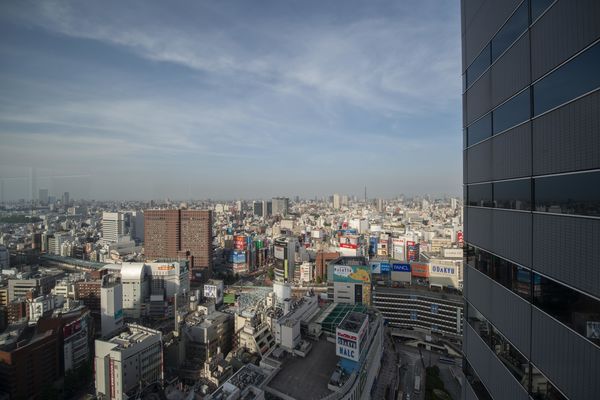How to obtain sharp images in digital photography
Jun 10, 2020 00:14:55 #
PaulBrit
Loc: Merlin, Southern Oregon
Kaib795 wrote:
I feel for you in that often one cannot use a trip... (show quote)
You have described some good tips. Eventually I will become pretty knowledgeable, I’m sure, but it will take me some time. Too busy taking photographs!
Jun 10, 2020 09:09:29 #
Jun 10, 2020 10:03:25 #
bela1950
Loc: Massachusetts
CHG_CANON wrote:
When you look at the 1:1 pixels, are you disappoin... (show quote)
Thank you so much for sharing your knowledge with us. It's incredible. This is the first post I have bookmarked. It's better than any book I've read.
I do have one question about back button focus. After reading your post I tried to set up my Nikon D500 for BBF. I followed the steps:
1. Turned off AF activation
2. Set it to AF-ON only
3. Out of focus release: Hit Enable
4. Set Focus to AF-C
5. AF-C priority selection: Release
Then I attempted to shoot with BBF.
I focused with the AF-On button and hit the shutter to take the shot.
However, I also was able to focus and shoot with the Shutter button. I thought the shutter was supposed to be only for shooting and the AF-ON button was dedicated to focus. Did I miss a step?
Thank you
Bela

Jun 10, 2020 10:23:03 #
bela1950 wrote:
Thank you so much for sharing your knowledge with ... (show quote)
Thank you Bela. I'll defer to the u-tube demonstrations, demonstrations from Steve Perry's https://backcountrygallery.com/ and / or our UHH D500 members. I'm going to guess you haven't re-programmed the shutter release button to be only metering and release, but please look to more expert sources for confirmation.
Jun 10, 2020 11:04:16 #
bela1950
Loc: Massachusetts
CHG_CANON wrote:
Thank you Bela. I'll defer to the u-tube demonstrations, demonstrations from Steve Perry's https://backcountrygallery.com/ and / or our UHH D500 members. I'm going to guess you haven't re-programmed the shutter release button to be only metering and release, but please look to more expert sources for confirmation.
Thank you
Jun 10, 2020 15:46:12 #
CHG_CANON wrote:
When you look at the 1:1 pixels, are you disappoin... (show quote)
What is all the fuss? Hold the camera still, make sure your shutter speed is proportional the the lens power and focus accurately just like you did with your film camera!
Jun 10, 2020 19:29:02 #
I'm posting an example of processing-based sharpening that I think well illustrates the point that almost all lenses, no matter how good, can benefit significantly in terms of microcontrast and perceived (and even real) sharpness.
Of course the first steps are as the OP described--to ensure that the image is in focus to begin with, and to eliminate camera shake to the greatest extent possible. But small details and microcontrast can be enhanced with deconvolution technology. This is not only perceived sharpness. All lenses to some extent soften the edges of details. There are ways to reconstruct those edges with computation without leaving visible artifacts. Is this cheating? Not unless you consider lens shortcomings as part of the image itself.
I'm posting two shots taken with a good modern Nikon lens on a D800E. The first is the original at original resolution, the second with the application of Topaz Sharpen AI. I suggest you download both, zoom in to 100% or larger, and do a direct comparison. Topaz Sharpen, and another of my favorites, which is unfortunately no longer being sold (Piccure Plus) will very noticeably improved the microcontrast and enhance detail edges without noticeable artifacting, and I highly recommend them both. They are part of my workflow for nearly every photo I work on.
Of course the first steps are as the OP described--to ensure that the image is in focus to begin with, and to eliminate camera shake to the greatest extent possible. But small details and microcontrast can be enhanced with deconvolution technology. This is not only perceived sharpness. All lenses to some extent soften the edges of details. There are ways to reconstruct those edges with computation without leaving visible artifacts. Is this cheating? Not unless you consider lens shortcomings as part of the image itself.
I'm posting two shots taken with a good modern Nikon lens on a D800E. The first is the original at original resolution, the second with the application of Topaz Sharpen AI. I suggest you download both, zoom in to 100% or larger, and do a direct comparison. Topaz Sharpen, and another of my favorites, which is unfortunately no longer being sold (Piccure Plus) will very noticeably improved the microcontrast and enhance detail edges without noticeable artifacting, and I highly recommend them both. They are part of my workflow for nearly every photo I work on.
Jun 10, 2020 19:35:50 #
It seems as though I am almost always a day or two late, but this is an excellent post. I do appreciate your time that has been put into this. Thank you so very much!!










Jun 10, 2020 22:25:54 #
kenArchi
Loc: Seal Beach, CA
What a differrence. In C-AF the photos after the first are very sharp. Obviously camera movement on first photo while depressing the button.
My photos are now sharper versus S-AF mode.
My photos are now sharper versus S-AF mode.
Jun 11, 2020 07:15:07 #
Kaib795
Loc: Maryland, USA
[quote=kymarto]I'm posting an example of processing-based sharpening that I think well illustrates the point that almost all lenses, no matter how good, can benefit significantly in terms of microcontrast and perceived (and even real) sharpness.
I do appreciate your suggestions and will try using Topaz Sharpen AI. Yourself and Gene51 are so knowledgeable and have inspired me to explore new ways of shooting pictures and post processing my work ... and I thought I already knew way to much! LOL I guess, like in my commercial printing, you can never know enough as things are always changing. Always learning & exploring (and testing). Cheers
I do appreciate your suggestions and will try using Topaz Sharpen AI. Yourself and Gene51 are so knowledgeable and have inspired me to explore new ways of shooting pictures and post processing my work ... and I thought I already knew way to much! LOL I guess, like in my commercial printing, you can never know enough as things are always changing. Always learning & exploring (and testing). Cheers
Jun 11, 2020 09:19:30 #
CHG_Canon
Very nice post, and good read... Good Info
I would offer one consideration... In Item 5, you state
----
5. Keep IS / VR active 100% on your lenses, except if / when this technology is known to be an issue with your specific lens model.
----
I have read offerings by a number of pros that IS should not be considered under some circumstances when you equipment is mounter on fixed surface, such as Mono-Pods or Tri-Pods
What has been your experience on this ??
Tks for you input
Cheers
GeoVz
------------------
Very nice post, and good read... Good Info
I would offer one consideration... In Item 5, you state
----
5. Keep IS / VR active 100% on your lenses, except if / when this technology is known to be an issue with your specific lens model.
----
I have read offerings by a number of pros that IS should not be considered under some circumstances when you equipment is mounter on fixed surface, such as Mono-Pods or Tri-Pods
What has been your experience on this ??
Tks for you input
Cheers
GeoVz
------------------
Jun 11, 2020 10:09:27 #
goldstar46 wrote:
CHG_Canon br br Very nice post, and good read... ... (show quote)
Thank you GeoVz!
For the VR / IS, the stabilization technology continues to advance, as well as different vendors deliver different results. Even within the same vendor, Canon for example, the best practices of Series II / III lenses are different from older designs.
My experience it that a monopod is not a fixed shooting platform. I keep stabilization active, enhancing the stability this tool adds. A gimbal head on a tripod also is not a fixed platform, where I keep IS / VR active, the same as when handholding.
Regarding a tripod, it depends on the equipment. Canon's series II IS-enabled lenses are not impacted by a completely steady, fixed tripod. The example below was captured in near dark at 1/10 sec at an extended 700mm using an EF 500 f/4L IS II, from a tripod with remote cable release. The IS was active / unchanged from using this lens outdoors and handheld. Although 'from tripod' isn't something I mention in my posted work in Flickr, there's no difference in the results for the many images from several of Canon IS-enabled Series II lenses, always with IS active regardless of with or without a tripod (and regardless of shutterspeed).
If the individual photographer encounters issues with a tripod and IS / VR for their specific equipment, they should update their technique and disable the stabilization and confirm their own results. That personal experience does not automatically extend to universal pronouncements to all cameras, lenses and situations. I tried to allow for this variation in my phrasing of idea #5.
Madagascar Golden Orb Spider by Paul Sager, on Flickr

Jun 11, 2020 10:12:47 #
CHG_CANON wrote:
Thank you GeoVz! br br For the VR / IS, the stabi... (show quote)
--------------------------------
Tks for your respond Canon... I appreciate you input
Cheers
GeoVz
--------------------
Jun 11, 2020 10:12:51 #
Jun 11, 2020 10:38:29 #
philo wrote:
if in doubt turn it off. i do
-------------------------------------------------
Philo...
I am of the same opinion, and I think that might be a good question to ask the 'Tech' people at CPS..
That is a consideration for me for I do have the privilege of calling them for advice... Think I will Call today
Having said that, I think it would be in my best interest to 're-visit' the issue because I shoot a lot of 'Tripod' stuff..
Cheers
GeoVz
------------------
If you want to reply, then register here. Registration is free and your account is created instantly, so you can post right away.







